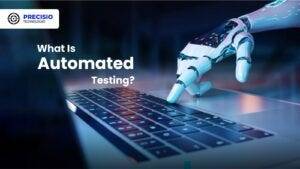#agile software
Explore tagged Tumblr posts
Text
Understanding Agile Software Development: Principles and Benefits

If you think Agile is just jargon, you miss out on a lot as a project manager. The Agile approach in project management has the potential to transform how you and your company adapt, innovate, and survive in ever-changing market circumstances. As appealing as it may sound, to achieve the greatest outcomes, you must first master the fundamentals of Agile. This article will cover everything Agile-related, from definitions and principles to methodologies and Agile software development.
0 notes
Text

What is Waterfall Model in Software Development
Explore the core principles of the Waterfall Model in software development, delving into its step-by-step methodology, various phases, and its significance in the development of enterprise applications.
#Examples of Waterfall Model#Waterfall model#Software Developers in USA#Agile software#software development
0 notes
Text

#open directories#messenger#agile messenger#webcore#chat#icq#msn#yahoo#aol#google#gif#software#instant messaging
124 notes
·
View notes
Note
me when I have a mortgage

[id: phil looking bored in a sponsorship reading. end id]
me in morning standup tbh (i have rent to pay) (i'm not standing up i'm sitting down)
#asks#wdapteo#who invented the agile method#i hate them#actually do people outside software know about the agile method#do you guys have to do sprints and standups and stories too#does anyone know what a story is i've been too scared to ask
13 notes
·
View notes
Text
What is "Agile" anyway?
So...
I feel like my posts are best when I write about things on my mind. And because of my job, "dark agile" and "dark scrum" have been a lot on my mind. "Dark" basically is used to mean "Subversive" or "Pretending to do X, but in fact doing to opposite.
Dark design for example, refers to design that is worse for the users ( Making it harder to say no to cookies than yes for example).
But to talk about dark agile, I have to explain what agile actually is. I also want to do this because agile is super simple. But if you ever want to see a LOT of successful scamming, check out business management consulting. A LOT of people have a vested interest in making it sound a lot more complicated than it is and/or ignore what it actually is in favor of telling companies what they want to hear.
Agile is short for "Agile software development"
First, understanding the problem agile solves:
Small companies can change what they are doing, and how they are doing it really quickly. They are also very good at listening to their developers and put their good ideas into practice.
As companies grow larger, they quickly lose these abilities.
Agile, is a way to keep those abilities in a larger company. This is done by giving each development team freedom to develop however they want ( not WHATever they want ), and to give them as direct a line as possible to whoever is the decision maker for the thing they are developing, which allows them to change what they are developing very quickly, but in a way that still leaves that decision maker happy.
Or in other words, encourage worker empowerment and grassroot organization ( Can you guess why companies REALLY try hard to not actually do agile? :p )
That's it. That is agile... as in, all of it.
You can read the agile manifesto and the agile principles, which flushes out what exact values agile is trying to achieve, but you basically already have all the info
If you are thinking "But what about Scrum?", scrum is a proposed tool to achieve agile. It is not agile, nor is it part of agile. Agile is a goal. Scrum is a tool that may help a company reach that goal.
22 notes
·
View notes
Text
Automated Testing vs. Manual Testing: Which One is Right for Your Project?

Achieving high-quality, reliable software stands as a fundamental requirement in software development. Successful testing functions as an essential tool to discover faults and build performance capabilities that create better user experience outcomes. Two main testing methods dominate the field: automated testing and manual testing. The process of quality software assurance uses different testing approaches that demonstrate their own advantages as well as weaknesses according to specific project requirements and scenarios. We will explore the specifics to determine which testing process works best for your system development efforts.
1. What Is Manual Testing?

Manual testing involves a human tester manually executing test cases without using automation tools. Key Characteristics:
The methodology focuses its efforts on user interface together with usability and experience testing.
Human-centered applications where selection requires discretion include ad hoc testing and enumerative testing as well as examinations that need human evaluation.
Human performers are required during this approach; thus, it demands substantial time.
2. What Is Automated Testing?

Software performing automated testing executes test cases through workflows and helpers. Key Characteristics:
Efficient for repetitive and regression testing.
Users must spend money on tools along with developing custom scripts for testing.
Reduces human error.
3. Advantages of Manual Testing

Human Intuition: Software testing professionals can detect kernels through their human cognitive ability that automated tools cannot match. The observation and evaluation of visual elements runs more efficiently through human operatives instead of advanced tools.
Flexibility: This method suits exploratory testing specifically because there are no pre-determined scripts available.
Low Initial Investment: Running this approach does not need tool purchases or applications to develop automation frameworks.
Adaptable for UI/UX Testing: Running this approach does not need tool purchases or applications to develop automation frameworks.
4. Advantages of Automated Testing

Speed: Executes repetitive tests much faster than humans.
Scalability: The system proves most effective for extensive projects that need constant system updates.
Accuracy: When performing recurring actions, automated systems minimize the chances of human mistakes.
Cost-Efficient in the Long Run: Once established and implemented, the system demands costly investments but ensures continuous development expenses decrease over time.
Better for CI/CD Pipelines: Such testing technology connects various development pipelines that support agile and DevOps methodologies.
5. Disadvantages of Manual Testing

Time-Consuming: The manual performance of repeated tests leads to delayed completion of projects.
Error-Prone: Large applications contain tiny bugs that human testers commonly fail to detect.
Not Ideal for Scalability: The process of increasing manual testing needs additional testers to avoid cost escalations.
6. Disadvantages of Automated Testing

Initial Costs: Organizations must provide high financial resources to procure testing tools together with developing programming constructs.
Limited to Pre-Defined Scenarios: These testing approaches work poorly for handling exploratory or ad hoc testing.
Requires Maintenance: Test scripts need frequent updates when application changes occur.
Not Suitable for UI/UX Testing: Struggles with subjective user experience evaluations.
7. When to Use Manual Testing

Small Projects: The testing method proves beneficial at a low cost for small applications and provides quick assessments.
Exploratory Testing: Testing this approach benefits projects whose scripts have not been defined yet or need evaluation for newly added features.
Visual and Usability Testing: Performing assessments on interface components together with design features.
8. When to Use Automated Testing

Large Projects: Handles scalability for projects with frequent updates.
Regression Testing: Program testing becomes more efficient through automation since automated assessments perform multiple tests following each update process.
Performance Testing: The system performs efficient capabilities to conduct load testing and stress testing.
Continuous Development Environments: Agile progression and DevOps implementations need automation as a core requirement.
READ MORE- https://www.precisio.tech/automated-testing-vs-manual-testing-which-one-is-right-for-your-project/
2 notes
·
View notes
Text
when big, traditional companies do agile, they don’t really do agile, they do spry
bc they’re not particularly agile, but they’re much more agile than you’d expect them to be for their age
4 notes
·
View notes
Text
Review of JIRA Software by Atlassian
JIRA Software by Atlassian: A Comprehensive Review
Overall
Rating: 4.5
JIRA Software by Atlassian is a powerful tool for project management and issue tracking. Users have found it to be an invaluable asset for their organizations. The overall rating of 4.5 reflects its effectiveness and utility in various scenarios.
Ease of Use
Rating: 4.1
While JIRA is praised for its user-friendly interface and ease of use in setting up different help desks or ticket requests, some users have encountered difficulties, resulting in a rating of 4.1. However, its versatility and user-friendly aspects still make it a solid choice.
Customer Service
Rating: 4.1
Users highly appreciate JIRA's customer service, rating it at 4.1. The support received from Atlassian has been described as amazing, enhancing the overall user experience.
Features
Pros:
Efficient Task Management: JIRA is excellent for creating tasks and logging issues.
Customization: Users can set up different help desks tailored to specific departments.
Integration: It seamlessly integrates with other tools like BitBucket and Zendesk, saving time and streamlining workflows.
Cons:
Task Cloning Issues: Cloning tasks when they are marked as "Done" can be problematic.
Learning Curve: Some users find it challenging to use, leading to misunderstandings and mistakes.
Costly Licensing: The licensing structure, particularly related to plugins, can be costly.
Productivity Impact: In some cases, JIRA has been noted to slow down productivity, requiring permissions for document access.
Value for Money
Rating: Varies
The value for money with JIRA largely depends on the specific needs and budget of the organization. While some find it to be a cost-effective solution, others mention concerns related to licensing costs and limitations.
Likelihood to Recommend
Rating: Varies
The likelihood to recommend JIRA varies, with users providing ratings between 7 and 10 out of 10. It is often recommended for agile teams and project management, but the learning curve and user experience may influence recommendations.
Alternatives Considered
Trello: Some users switched from Trello to JIRA due to JIRA's wider user base and additional features.
Microsoft Project: The transformation to agile practices led to a switch from Microsoft Project to JIRA for some organizations.
Azure DevOps Services: Azure DevOps was replaced by JIRA due to cost considerations and user management issues.
Reasons for Choosing JIRA
Users have chosen JIRA for its flexibility, scalability, and extensive user base. The ability to manage multiple projects seamlessly and the availability of a strong community for support were key reasons for selection.
In summary, JIRA Software by Atlassian offers a powerful solution for project management and issue tracking, with its user-friendly interface, integration capabilities, and exceptional customer service. However, potential users should be aware of the learning curve and potential cost considerations when choosing JIRA for their organization's needs.
#jira software review#jira software reviews#jira reviews#jira review#agile software jira#jira service desk reviews#latest jira software version#jira software vs jira core#jira 2#jirav reviews#who uses jira#why jira#does jira have a free version#jira review reddit#can jira replace microsoft project#can jira be used for non software projects#can jira send reminders#why is jira so popular#is jira software#how jira software works#how to use jira software development#is jira scrum#is jira good#when to use jira#where is jira#which jira version am i using#which jira certification is best#who uses jira software#who makes jira software#why jira is bad
11 notes
·
View notes
Text
The Intriguing Role of the Number 3 in Software Management
In the world of software management, the presence of the number three is surprisingly pervasive and influential. Whether it’s in methodologies, frameworks, or processes, this number frequently emerges, offering a simple yet profound structure that can be seen across various aspects of the field. From the three-tier architecture to the rule of three in coding, the number three seems to be a…

View On WordPress
3 notes
·
View notes
Text
Dive into the world of Agile Development! Our latest blog takes you from concept to launch & strategies that boost customer satisfaction and drive market success.
2 notes
·
View notes
Text
Software Development
software development is a dynamic and complex discipline that combines technical expertise, user-centered design, rigorous testing, cybersecurity considerations, and effective collaboration. By embracing these principles, software developers can create innovative solutions that enhance productivity, improve user experiences, and drive technological advancements in various industries.
#software development#custom software development#software development company#agile software development
2 notes
·
View notes
Text
Boost Quality with Automation Testing Services

Software testing has always been a vital component of the development lifecycle, acting as a safeguard against errors, inefficiencies, and potential vulnerabilities. But in the fast-paced, innovation-driven world of modern IT, Automation Testing Services are no longer a luxury—they are a necessity.
As digital transformation accelerates and user expectations evolve, businesses are under increasing pressure to deliver flawless applications faster than ever. That’s where automated solutions come in. They allow teams to detect bugs early, enhance test coverage, and ultimately improve release cycles while keeping quality intact.
In this article, we’ll explore the ins and outs of Automation Testing Services, when and how to use them, and how they align with broader Software Testing Services and Agile Development Services for high-performing tech organizations.
What Are Automation Testing Services?
Defining Automation Testing Services
Automation Testing Services refer to the use of specialized software tools and frameworks to execute pre-scripted tests on a software application before it is released into production. These tools compare actual outcomes with expected outcomes, flagging bugs without human intervention.
Core Components of Automation Testing
Test Scripts: Written code that automates test cases.
Automation Frameworks: Reusable structures to streamline test case development (e.g., Selenium, Appium, TestNG).
Continuous Integration/Continuous Deployment (CI/CD): Tools like Jenkins integrate automated tests into development pipelines.
Reporting Tools: Provide real-time feedback and dashboards.
Why It Matters
He or she using manual testing alone can only go so far. Manual tests are repetitive, time-consuming, and susceptible to human error. Automated tests are consistent, faster, and can run 24/7, ensuring comprehensive and ongoing validation of code quality.
When to Use Automated Software Testing Services
Strategic Moments for Test Automation
Knowing when to use Automated Software Testing Services can significantly affect development costs and outcomes. They’re ideal when:
The application is stable: Changes to UI and features are infrequent.
Regression testing is frequent: Automation can rerun tests faster and with consistency.
Load and performance tests are needed: Simulating thousands of users manually is impractical.
You want to integrate with CI/CD: Test automation complements Agile and DevOps workflows.
Automation is Not a One-Size-Fits-All
They should still use manual testing when:
Exploratory or usability testing is needed.
The application is in the very early stages of development.
Business logic is still being defined or rapidly changing.
Your Checklist for Partnering with an Automation Testing Company
What to Look for in an Automation Testing Partner
Before committing, use this checklist to evaluate the potential of an Automation Testing Services provider:
1. Technical Expertise
Do they understand your domain?
Can they work with tools like Selenium, Cypress, or Playwright?
2. Agile Compatibility
Do they align with your Agile Development Services model?
Can they work in iterative sprints with flexible goals?
3. Tool Integration
Do their automation tools integrate with your CI/CD pipeline?
4. Reporting and Documentation
Are their reporting tools transparent and actionable?
5. Security Practices
Is test data handled securely?
Are they compliant with GDPR, HIPAA, etc.?
6. Test Maintenance Capabilities
Can they update test scripts when your app changes?
7. Proven Experience
Do they have a history of delivering reliable Software Testing Services?
Benefits of Automation Testing Services
Why Organizations Rely on Test Automation
1. Speed and Efficiency
They can run tests in seconds that would take hours manually.
2. Reusability
Test scripts can be reused across different projects, reducing duplication.
3. Cost Effectiveness
Although initial setup costs are higher, automation saves money in the long run.
4. Increased Coverage
Automated scripts can test a broader set of conditions and variables.
5. Continuous Testing
Test early, test often—an ideal match for Agile Development Services.
How Automation Testing Complements Software Testing Services
The Relationship Between Manual and Automated Testing
It’s important to note that Automation Testing Services are a subset of broader Software Testing Services, which include:
Functional Testing
Usability Testing
Compatibility Testing
Security Testing
While automation covers repetitive tasks, manual efforts still play a key role in exploratory and human-centric validation.
Blended Strategy Works Best
They use automation for consistency and manual testing for creative, one-off scenarios. This hybrid model leads to better coverage and more reliable outcomes.
How Agile Development Services Fuel Automation
Agile and Test Automation: A Perfect Match
Agile Development Services thrive on rapid iterations and continuous feedback. Test automation aligns perfectly by providing fast feedback loops and reducing time-to-market.
Automation in Agile Sprints
He or she using Agile will benefit from automation at multiple points:
Unit tests after each code check-in.
Integration tests during daily builds.
Regression tests before releases.
Tools That Work Well in Agile Environments
Jenkins + Selenium: For CI/CD pipelines.
JIRA + Zephyr: For test management.
Docker + Kubernetes: For test environment orchestration.
Trends Shaping the Future of Automation Testing
What’s New in 2025?
1. AI-Powered Testing
AI tools can now write and optimize test cases automatically. They reduce maintenance and make testing more intelligent.
2. Scriptless Automation
Tools like TestCraft and Katalon offer low-code/no-code platforms, allowing even non-technical users to create test scenarios.
3. Shift-Left Testing
Testing starts earlier in the lifecycle, even before coding begins.
4. Hyperautomation
The combination of multiple automation technologies to streamline not just testing but also test management and reporting.
Key Takeaways
Automation Testing Services speed up testing, enhance coverage, and support continuous integration.
Use automation strategically—when apps are stable and regression tests are frequent.
Align with partners that support your CI/CD and Agile Development Services.
Software Testing Services still require manual testing in many areas—automation is not a silver bullet.
Embrace the latest trends like AI, scriptless automation, and shift-left strategies.
Conclusion
In today’s software landscape, Automation Testing Services are more than just a technical upgrade—they’re a necessity for businesses that want to stay competitive, agile, and customer-focused.
They enhance efficiency, reduce human error, and enable fast, reliable deployment cycles that are essential in Agile Development Services environments.
Still, automated testing is not the only answer. A thoughtful blend of automated and manual Software Testing Services creates the best results—ensuring software is robust, user-friendly, and ready for the demands of the market.
By integrating the right tools, adopting a flexible mindset, and partnering with experienced providers, companies can truly reap the benefits of automated testing.
#Automation Testing Services#Automated Testing Services#Automation Testing Company#Test Automation Services#Software Testing Services#Agile Development Services
0 notes
Text
Boosting Efficiency Through Agile Software Development: Why Your App Needs an Agile Approach
Traditional software development methods often fall short of delivering timely results, prompting organizations to turn towards more dynamic alternatives. Enter agile software development, a game-changing approach that provides flexibility, continuous improvement, and quick adaptability to evolving market needs. Partnering with an��agile software development company can significantly streamline your projects, enhancing the overall effectiveness of your application development cycle.
Understanding Agile Software Development
Agile software development is an iterative and incremental approach focused on collaboration, adaptability, and continuous improvement. Unlike traditional waterfall methodologies, agile emphasizes customer satisfaction through frequent delivery of functional software components. This method divides the entire project into smaller, manageable segments known as sprints, usually lasting one to four weeks. After each sprint, the development team presents a usable product increment, enabling stakeholders to provide feedback early and often.
Why Agile is Crucial for Modern App Development
Faster Time-to-Market
In the highly competitive app market, speed can make or break success. Agile methods help app developers deliver working software faster by breaking projects into small, achievable tasks. Regular updates and early feedback loops allow for quick adjustments, ensuring the final product aligns closely with business objectives and user expectations.
Improved Product Quality
By facilitating constant communication between development teams, stakeholders, and end-users, agile software development ensures superior product quality. Continuous testing and reviews identify potential issues early, minimizing bugs, and enhancing the app’s reliability and user experience.
Greater Flexibility and Adaptability
Market trends and user preferences evolve rapidly. Agile development allows for adaptability, empowering businesses to pivot swiftly. Changes in requirements or project goals are seamlessly integrated into the ongoing development process, ensuring the app remains relevant and competitive.
Enhanced Collaboration
Agile methodologies foster collaboration among stakeholders, developers, and clients. Regular sprint reviews and retrospectives provide transparent communication channels, helping resolve conflicts efficiently and ensuring everyone stays aligned with the project goals.
Choosing the Right Agile App Development Company
Selecting the ideal agile app development company is critical for leveraging the full potential of agile methodologies. Here’s how you can identify the right partner:
Proven Track Record
Choose a company with demonstrated success in agile projects, supported by a portfolio of completed apps. Experienced agile providers showcase efficiency, innovation, and consistent delivery through past projects.
Transparent Communication
An agile app development partner should maintain transparent, open communication throughout the project’s lifecycle. Regular updates, sprint meetings, and clear documentation are fundamental to a successful agile collaboration.
Skilled, Cross-Functional Teams
Opt for a development partner equipped with a multi-disciplinary team capable of handling various tasks seamlessly. Agile thrives on team synergy, and having skilled professionals from diverse technical backgrounds ensures comprehensive and robust app development.
Emphasis on Customer Satisfaction
Prioritize companies that place a significant emphasis on customer feedback and satisfaction. Agile principles strongly advocate customer involvement, ensuring the final product genuinely meets user needs and expectations.
Many industry leaders, including tech giants and startups, have reaped immense benefits from agile software development. Spotify, Amazon, and Netflix exemplify how agile practices significantly enhance innovation and responsiveness to customer demands. By continuously iterating and refining their products, these companies maintain market leadership and set industry benchmarks.
Overcoming Agile Implementation Challenges
While agile methodologies offer multiple advantages, implementation can pose challenges. Common issues include resistance to change, inadequate training, and miscommunication among stakeholders. Here’s how your agile software development company can help mitigate these challenges:
Comprehensive Training: Providing detailed training sessions for your team can smooth the transition into agile processes, fostering a culture of acceptance and adaptability.
Continuous Feedback Loop: Establishing regular feedback mechanisms to promptly address concerns and adjustments, maintaining clarity and transparency across all levels.
Customized Agile Approach: Adapting agile frameworks to suit your specific organizational needs, ensuring smoother implementation and higher acceptance among team members.
Conclusion
Thus, adopting agile methodologies through collaboration with a proficient agile software development company not only accelerates the development process but also boosts app quality, adaptability, and customer satisfaction.
With increasing market volatility and user expectations, businesses cannot afford to rely solely on traditional development methods. Embracing agility ensures that your applications remain relevant, competitive, and highly responsive to changing market dynamics. Partnering with an expert agile app development provider positions your business for sustained growth and innovation, allowing you to stay ahead in a dynamic digital landscape.
0 notes
Text
AIgile: How AI Transforms Agility in Software Development
AIgile — the blend of artificial intelligence and agility — is more than a buzzword. It signals a shift that could either erode or elevate everything agile was meant to stand for. For those wondering if the Agile hype is over, the emergence of AI might just be the next chapter — not an ending, but a reframing. From Agile to AIgile: A Changing Landscape Agile was born from a manifesto that…
#agile coaching#Agile Manifesto#agile practices#Agile Software Development#agile teams#Agile Transformation#AI in Agile#AI tools#AIgile#artificial intelligence#Backlog Management#Continuous Improvement#DevOps#NLP in Agile#product development
0 notes
Text
GQAT Tech’s QA Arsenal: Powerful Tools That Make Quality Assurance Smarter
In this technology-driven age, delivering high-quality software is not an optional function but a necessity. Clients now expect us to produce digital products— apps, websites, etc.-- that are made quickly and error-free. The best way to achieve this is with a quality assurance (QA) process and effective tools to adapt to their needs.
The GQAT Tech QA team calls their QA efficient and effective tools combined, and their QA arsenal productive platforms, automation, tools, and proven processes. These testing tools and approaches can help a QA team find bugs more quickly, decrease hands-on effort, and allow more test coverage depending on the software project.
Now, let's look at what a QA Arsenal is, why it is important, and how QA will help your business produce better software.
What is the QA Arsenal?
The "QA Arsenal" refers to the collection of tools, frameworks, and strategies at GQAT Tech that the QA team employs to provide quality testing to clients. The QA Arsenal is like a toolbox, where everything a tester needs to complete the project is in the toolbox.
It includes:
Automation testing tools
Manual testing techniques
Defect tracking systems
Performance testing platforms
Mobile and web testing tools
CI/CD integrations
Reporting and analytics dashboards
What Makes GQAT’s QA Arsenal Unique?
We do not use tools haphazardly. We use the most appropriate tools based on the client's type of project, technology stack, service timeline, and quality. The QA Arsenal is designed to offer flexibility and therefore considers:
Web apps
Mobile apps
Embedded systems
IoT devices
Enterprise software
Whether functional test, compatibility test, API test, performance test, GQAT Tech utilizes a custom mixture of tools to ensure that it is reliable, secure, and ready for launch.
Tools Included in the QA Arsenal
Here are some common tools and platforms GQAT Tech uses:
🔹 Automation Tools
Selenium – For web application automation
Appium – For mobile app automation
TestNG / JUnit – For running and managing test cases
Robot Framework – For keyword-driven testing
Postman – For API testing
JMeter – For performance and load testing
🔹 Defect & Test Management
JIRA – To log, track, and manage bugs
TestRail / Zephyr – For test case management
Git & Jenkins – For CI/CD and version control
BrowserStack / Sauce Labs – For cross-browser and device testing
How It Helps Clients
Using the QA Arsenal allows GQAT Tech to:
Detect Bugs Early – Catch issues before they reach end-users
Save Time – Automation reduces time spent on repetitive tasks
Test on Real Devices – Ensures compatibility across systems
Generate Reports – Easy-to-read results and test status
Integrate with DevOps – Faster release cycles and fewer rollbacks
Improve Product Quality – Fewer bugs mean a better user experience
Real Results for Real Projects
GQAT Tech’s QA Arsenal has been successfully used across different domains like:
FinTech
Healthcare
E-commerce
Travel & Transport
EdTech
AI and IoT Platforms
With their domain expertise and knowledge of tools, they help businesses go faster, mitigate risks, and build customer diligence.
Conclusion
Building a great QA team is essential, but having them equipped with the right tools makes all the difference. GQAT Tech’s QA Arsenal provides their testers with everything they need to test faster, smarter, and more comprehensively.
If you are building a digital product and want to ensure it is released in the real world, you need a testing partner who does not leave things to chance. You need a testing partner with a battle-tested QA arsenal.
💬 Ready to experience smarter quality assurance?
👉 Explore GQAT Tech’s QA Arsenal and get in touch with their expert team today!
#QA Arsenal#Software Testing Tools#Quality Assurance Strategies#Automation Testing#Manual Testing#Selenium#Appium#Test Management Tools#CI/CD Integration#Performance Testing#Defect Tracking#Cross-Browser Testing#GQAT Tech QA Services#Agile Testing Tools#End-to-End Testing
0 notes
Text
Unlock Strategic Success with Planview PPM Solutions by Winmill
In today’s fast-paced digital environment, organizations need more than just project management — they need a strategic approach to align every initiative with business goals. That’s where Planview Project Portfolio Management (PPM), delivered by Winmill PPM, makes a transformative impact. Winmill is a premier partner specializing in Planview PPM solutions, helping enterprises simplify complex portfolios, improve resource visibility, and drive better outcomes. Whether your focus is IT project governance, strategic planning, or agile transformation, Winmill tailors Planview's powerful tools to your specific needs. With Planview, organizations gain: ✅ Centralized Portfolio Management ✅ Real-Time Reporting and Dashboards ✅ Agile and Waterfall Integration ✅ Resource Optimization and Capacity Planning ✅ Improved PMO Efficiency Winmill stands apart by not just implementing software, but by empowering teams with strategy, training, and ongoing support to unlock the full value of their Planview investment. Why Choose Winmill for Planview Implementation?
20+ years of PPM experience
Certified Planview consultants
Proven success across industries including healthcare, finance, and government
Scalable solutions for organizations of all sizes Explore how Winmill can elevate your project execution and strategic alignment. 👉 Learn More: https://ppm.winmill.com/
#planview software#broadcom clarity ppm#winmillppm#clarity project management tool#marketing#agile software development#resources#software engineering#clarity ppm
0 notes